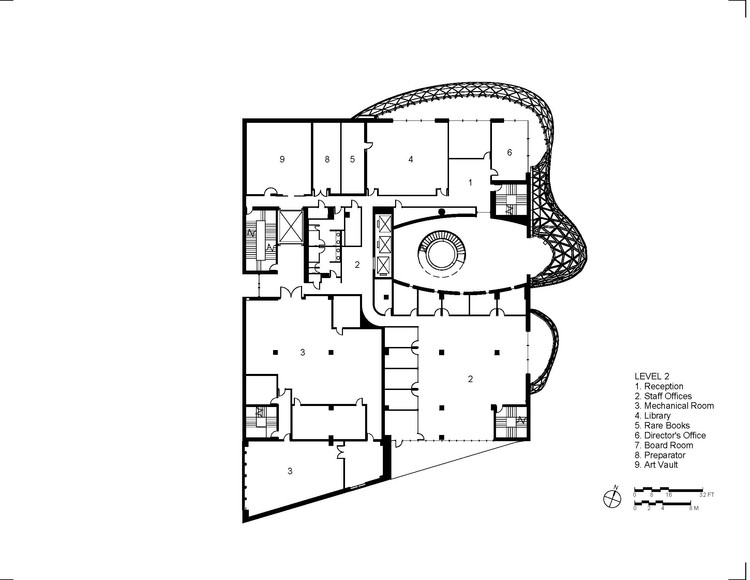
-
Architects: HOK
- Area: 68000 ft²
- Year: 2011
-
Photographs:Moris Moreno, Beck & Mike Rixon
-
Manufacturers: Kuraray, Florida Rock, Novum Structures, Penetron, Reinforced Structures, Inc.

Text description provided by the architects. The design challenge was to create an affordable, iconic building symbolic of the Spanish painter’s work. The team ensured technical feasibility and design excellence while avoiding “kitsch.”
The three-story museum is on a beautiful bayside site along St. Petersburg’s downtown waterfront. The dramatic envelope balances the exhibition and protection of the priceless masterpieces within a simple, powerful aesthetic. A “treasure box” shelters the 2,000-piece collection from potential Category 5 hurricane winds and storm surges.

The design opens up the 18-inch-thick concrete walls with a free-form glass geodesic structure that intrigues visitors while bringing daylight and bay views into public spaces. The 75-foot-tall geodesic glass “Enigma” and 45-foot-tall “Igloo” are formed by 1,062 undulating faceted glass panes, with no two exactly alike.


A poured-in-place, sculptural concrete spiral staircase beckons visitors to the galleries above. In the Permanent Gallery, black plaster light cannons focus natural light on seven large “Masterworks,” illuminating the paintings with UV-filtered daylight within curatorial standards.

"We constantly consider the visitor experience when we design a museum. A large number of people visiting a museum will be there for the first time. The architecture must be extremely easy to understand. It can be quite adventurous and stimulating, but the circulation pathways should be clear from the moment visitors arrive at the building.

"We deliberately exposed the unfinished faces of the concrete to reduce maintenance and to allow it to be a tough, natural foil to the more refined precision of the glass Enigma. This contrast between the rational world of the conscious and the more intuitive, surprising natural world is a constant theme in Dalí's work.

"The flowing, free-form use of geodesic triangulation is a recent innovation enabled by modern computer analysis and digitally controlled fabrication that allows each component to be unique. No glass panel, structural node or strut is precisely the same. This permitted us to create a family of shapes that, while structurally robust, more closely resembles the flow of liquids in nature." —Yann Wymouth, design director for HOK Florida.
































































